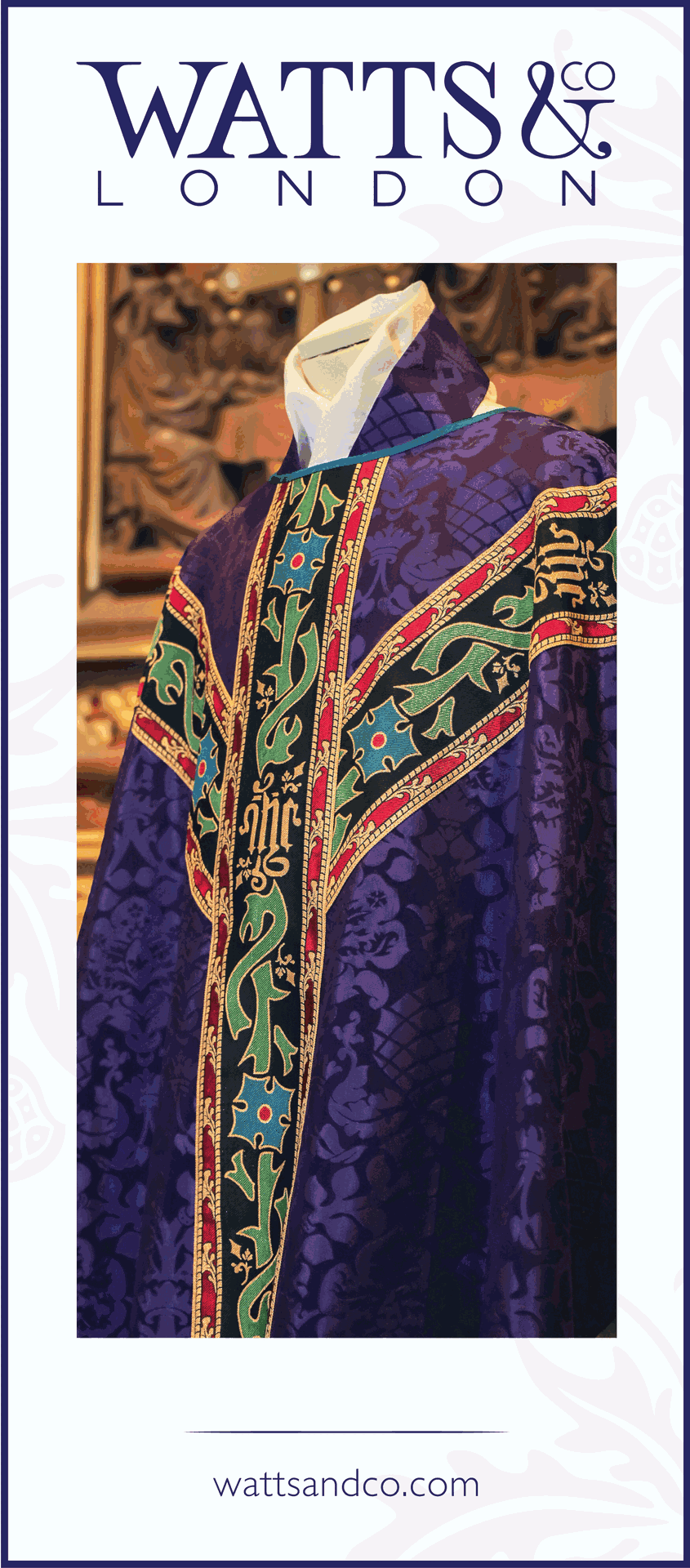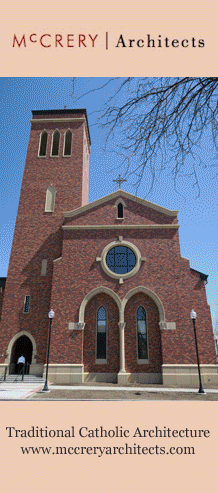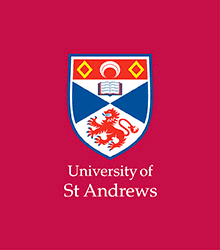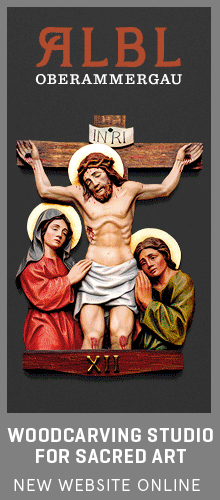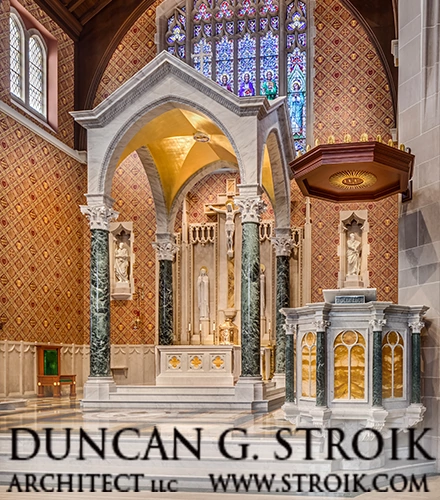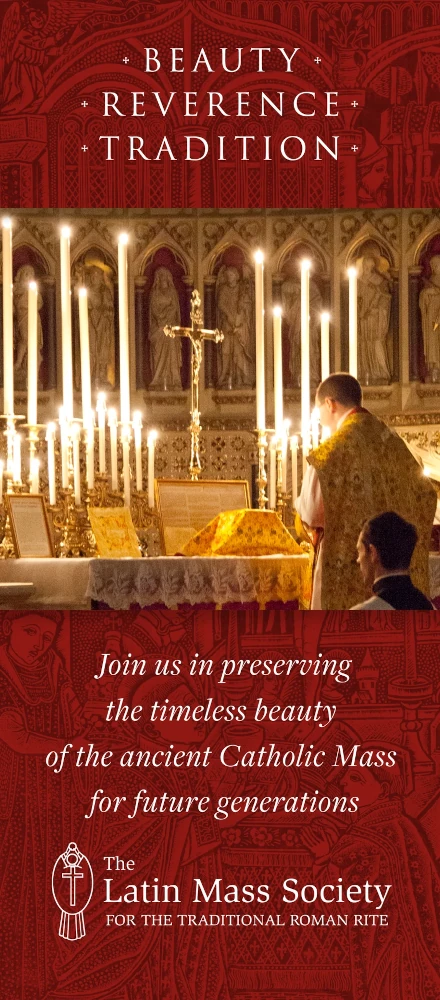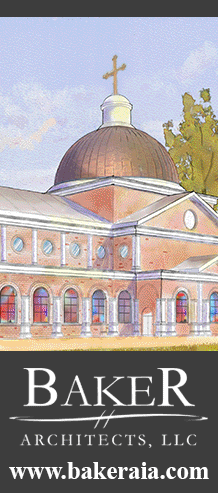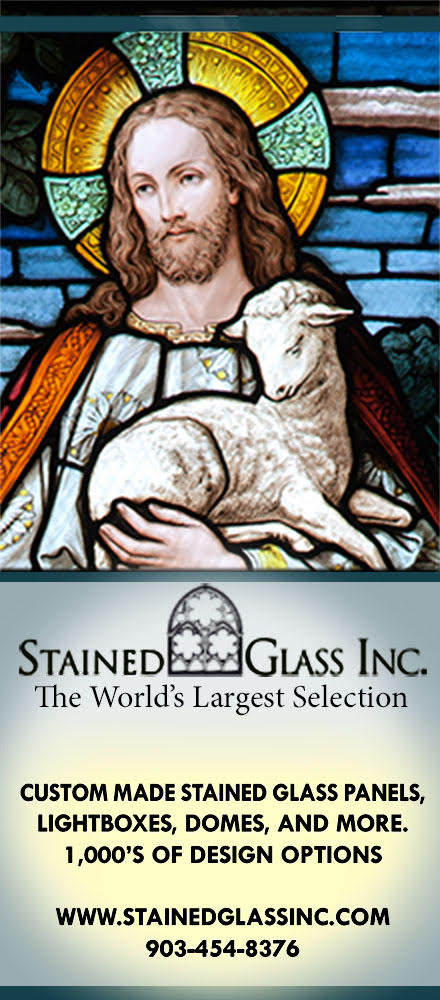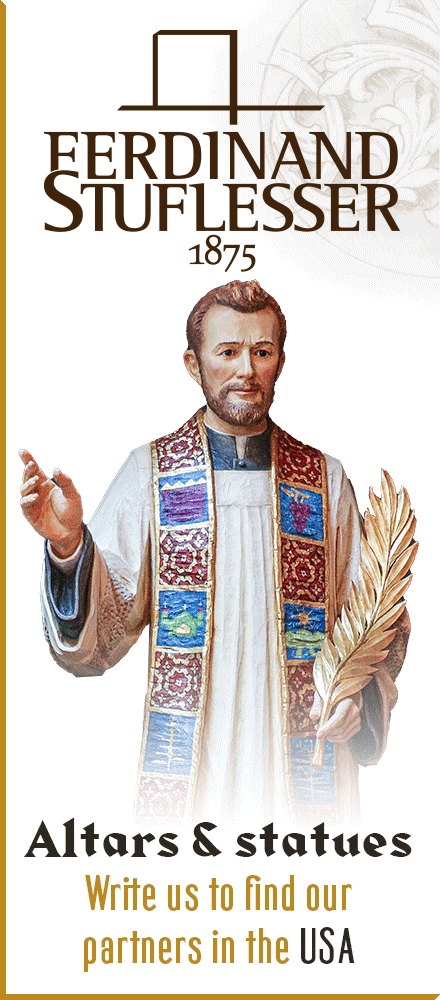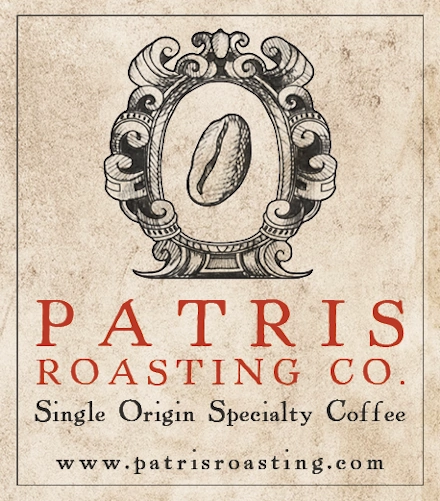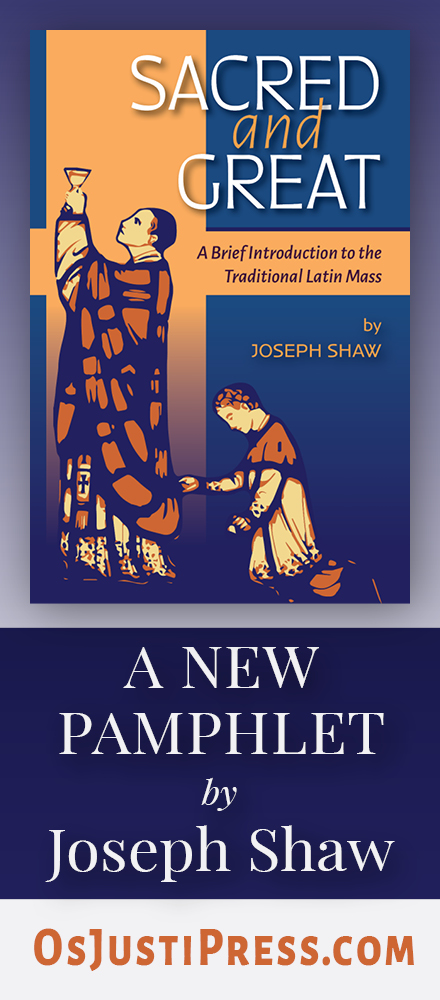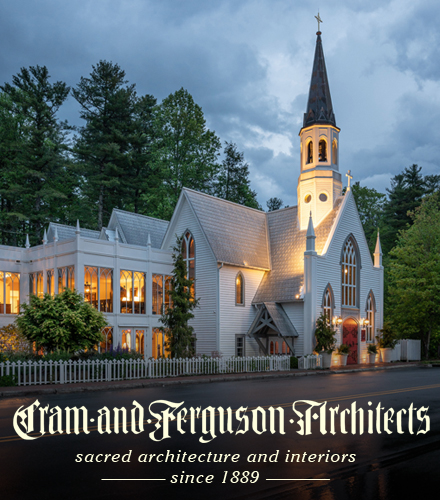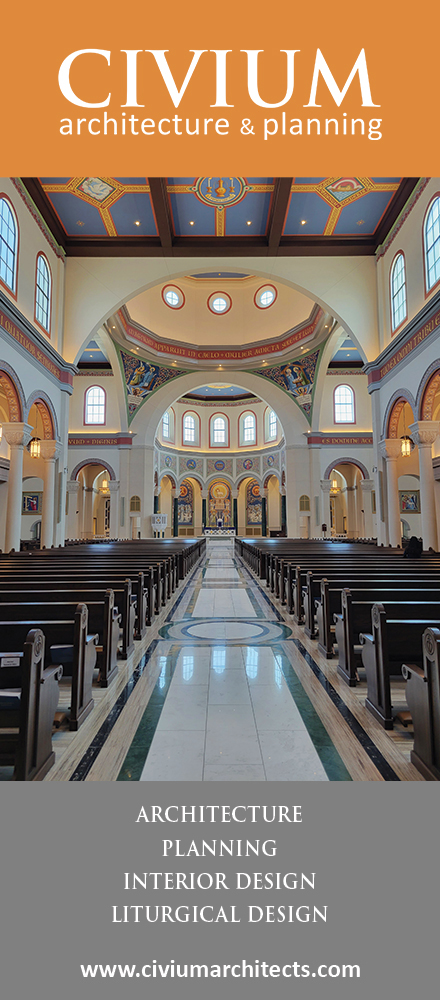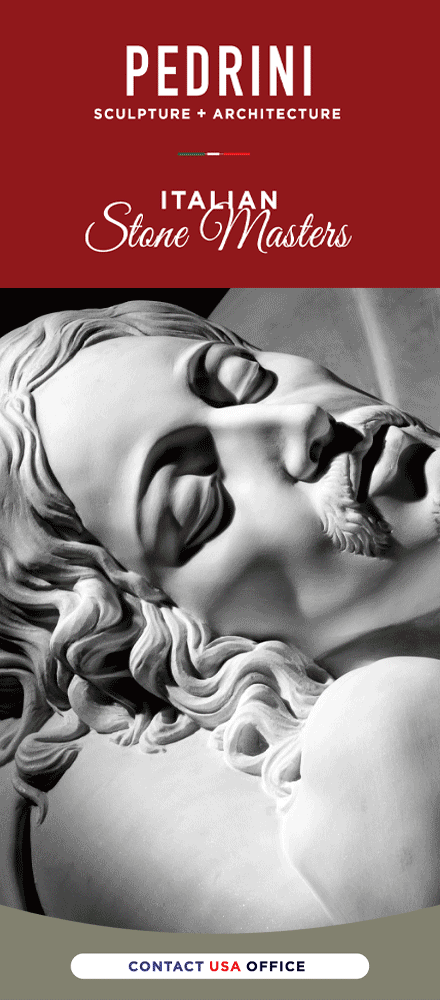 The Offertory of the Dominican Rite is one of its most famous features and has strong similarities to the Sarum and several other early medieval monastic uses. In this first picture we see again that beautiful cloth-of-gold solemn set. The priest is Fr. William Lewis, O.P. (R.I.P.), in that year, 1958, prior of the House of Studies. He is assisted by the deacon, Bro. Barnabas Curtin, O.P. The subdeacon was, I understand, a student visiting from another province. The elaborate vestments and the fact that the prior is celebrant shows that this is a very high ranked feast. In fact, it is actually the Easter Vigil, as you can tell because the tabernacle door is open: there have been no reserved species since the Good Friday communion. Fr. Lewis has just turned and greeted the community with the Dominus Vobiscum and said that lonely Oremus that is the only vestige of the ancient "Prayers of the Faithful" in both our Rite and the Roman. One of the archaic aspects of the Easter Vigil is that there is no Offertory chant--the Vigil's form predates its development in the 700s.
The Offertory of the Dominican Rite is one of its most famous features and has strong similarities to the Sarum and several other early medieval monastic uses. In this first picture we see again that beautiful cloth-of-gold solemn set. The priest is Fr. William Lewis, O.P. (R.I.P.), in that year, 1958, prior of the House of Studies. He is assisted by the deacon, Bro. Barnabas Curtin, O.P. The subdeacon was, I understand, a student visiting from another province. The elaborate vestments and the fact that the prior is celebrant shows that this is a very high ranked feast. In fact, it is actually the Easter Vigil, as you can tell because the tabernacle door is open: there have been no reserved species since the Good Friday communion. Fr. Lewis has just turned and greeted the community with the Dominus Vobiscum and said that lonely Oremus that is the only vestige of the ancient "Prayers of the Faithful" in both our Rite and the Roman. One of the archaic aspects of the Easter Vigil is that there is no Offertory chant--the Vigil's form predates its development in the 700s.The subdeacon has uncovered the vessels and handed them to the deacon. The deacon is here handing the priest the chalice with the paten and host on top. He says quietly to the priest Immola Deo sacrificium laudis et redde Altissimo vota tua. The priest then immediately offers up the bread and wine in a single oblation. At Low Mass, where there is no deacon to address him, the priest says instead Quid retribuam Domino pro omnibus quae retribuit mihi? Calicem salutaris accipiam et nomen Domini invocabo before making the oblation. Our single Offertory Prayer, Suscipe Sancta Trinitas, is shared by many northern uses. The priest then places the host and chalice on the corporal and puts the paten aside. There are no other prayers at this point. You can also see in this picture the thurifer waiting to present the incense, and the two acolytes, who are preparing the lavabo bowl and towel, which they will give to the deacon and subdeacon for washing the priest's hands after the incensation.
 The priest here turns to the deacon to bless the incense. In this photograph we again see Fr. Parmisano and Bro. Ambrose. The thurifer holds the censer and the deacon presents a spoonful of incense. The priest blesses it silently. We do not have the well-know Roman prayer for blessing incense, so the blessing is done with a simple Sign of the Cross. That lovely Gothic censor, which was cast for the dedication of the chapel, was stolen several years ago. I carried it many times as a student back in the 1970s and 80s. It makes me sad to see it and know that it is gone. Its twin, however, is still with us, regularly in use at the 11:00 a.m. Schola Cantorum High Mass (Ordinary Use) at St. Dominic's in San Francisco. That choir, under the direction of Simon Berry, has produced wonderful CDs of Byrd, Palestrina and Tallis. You can find the CDs here along with sample recordings:
The priest here turns to the deacon to bless the incense. In this photograph we again see Fr. Parmisano and Bro. Ambrose. The thurifer holds the censer and the deacon presents a spoonful of incense. The priest blesses it silently. We do not have the well-know Roman prayer for blessing incense, so the blessing is done with a simple Sign of the Cross. That lovely Gothic censor, which was cast for the dedication of the chapel, was stolen several years ago. I carried it many times as a student back in the 1970s and 80s. It makes me sad to see it and know that it is gone. Its twin, however, is still with us, regularly in use at the 11:00 a.m. Schola Cantorum High Mass (Ordinary Use) at St. Dominic's in San Francisco. That choir, under the direction of Simon Berry, has produced wonderful CDs of Byrd, Palestrina and Tallis. You can find the CDs here along with sample recordings:http://www.stdominics.org/music/recordings.asp
 This photograph shows the incensing of the altar after the Offertory Prayer; the priest is assisted by the deacon. Our method of incensing is simpler than the Roman. The priest makes a single Sign of the Cross over the gifts with the thurible, bows his head, and raises the thurible three times before the gifts. He makes three lifts to the Cross. He then moves to the Epistle side, making three lifts above the altar; then he returns to the middle and proceeds to the Gospel side, making three lifts. Then he moves from Gospel corner to Epistle corner, making six lifts along the way below the edge of the altar (making a bow to the Cross at the middle). The priest gives the censer back to the deacon, who incenses him with three lifts, and then hands it off to the thurifer. There is, by the way, a Dominican way of making the lifts. We never, never, never clank the chains, and the lifts are straight up and down. I like to think that this is so that the clanking noise doesn't disturb the chant. I forgot to mention earlier that we do not incense the altar at the beginning of Mass. In the Foremass, incense is for the Gospel only. Now, as the sacrifice begins, we incense the altar.
This photograph shows the incensing of the altar after the Offertory Prayer; the priest is assisted by the deacon. Our method of incensing is simpler than the Roman. The priest makes a single Sign of the Cross over the gifts with the thurible, bows his head, and raises the thurible three times before the gifts. He makes three lifts to the Cross. He then moves to the Epistle side, making three lifts above the altar; then he returns to the middle and proceeds to the Gospel side, making three lifts. Then he moves from Gospel corner to Epistle corner, making six lifts along the way below the edge of the altar (making a bow to the Cross at the middle). The priest gives the censer back to the deacon, who incenses him with three lifts, and then hands it off to the thurifer. There is, by the way, a Dominican way of making the lifts. We never, never, never clank the chains, and the lifts are straight up and down. I like to think that this is so that the clanking noise doesn't disturb the chant. I forgot to mention earlier that we do not incense the altar at the beginning of Mass. In the Foremass, incense is for the Gospel only. Now, as the sacrifice begins, we incense the altar. The priest washes his hands with a shorter version of the Psalm Lavabo used in the Roman Rite. He bows and recites the prayer In spiritu humilitatis, and then turns to the ministers and says Orate fratres, to which there is no reply in our Rite. He then reads the Secrets. There is no incensing of the ministers until the Preface. In this last photograph, another unclear one scanned from Fr. Bonniwell's book, you can see the ministers in position for this incensation. The priest has just begun to sing the Preface; in a moment, the deacon and subdeacon, as well as the two acolytes, will turn to the thurifer. He will incense them: deacon and subdeacon with two lifts each, and the senior and junior acolyte with one lift each. The thurifer then goes to incense each individual friar in the stalls, according to their order of religion. The provincial, if present, gets three lifts; each priest, two lifts; unordained brothers, one lift. It was, and still is, customary for the thurifer then to incense the people in parochial churches.
The priest washes his hands with a shorter version of the Psalm Lavabo used in the Roman Rite. He bows and recites the prayer In spiritu humilitatis, and then turns to the ministers and says Orate fratres, to which there is no reply in our Rite. He then reads the Secrets. There is no incensing of the ministers until the Preface. In this last photograph, another unclear one scanned from Fr. Bonniwell's book, you can see the ministers in position for this incensation. The priest has just begun to sing the Preface; in a moment, the deacon and subdeacon, as well as the two acolytes, will turn to the thurifer. He will incense them: deacon and subdeacon with two lifts each, and the senior and junior acolyte with one lift each. The thurifer then goes to incense each individual friar in the stalls, according to their order of religion. The provincial, if present, gets three lifts; each priest, two lifts; unordained brothers, one lift. It was, and still is, customary for the thurifer then to incense the people in parochial churches.In the next installment, I will describe the rites from the Canon to Communion.

